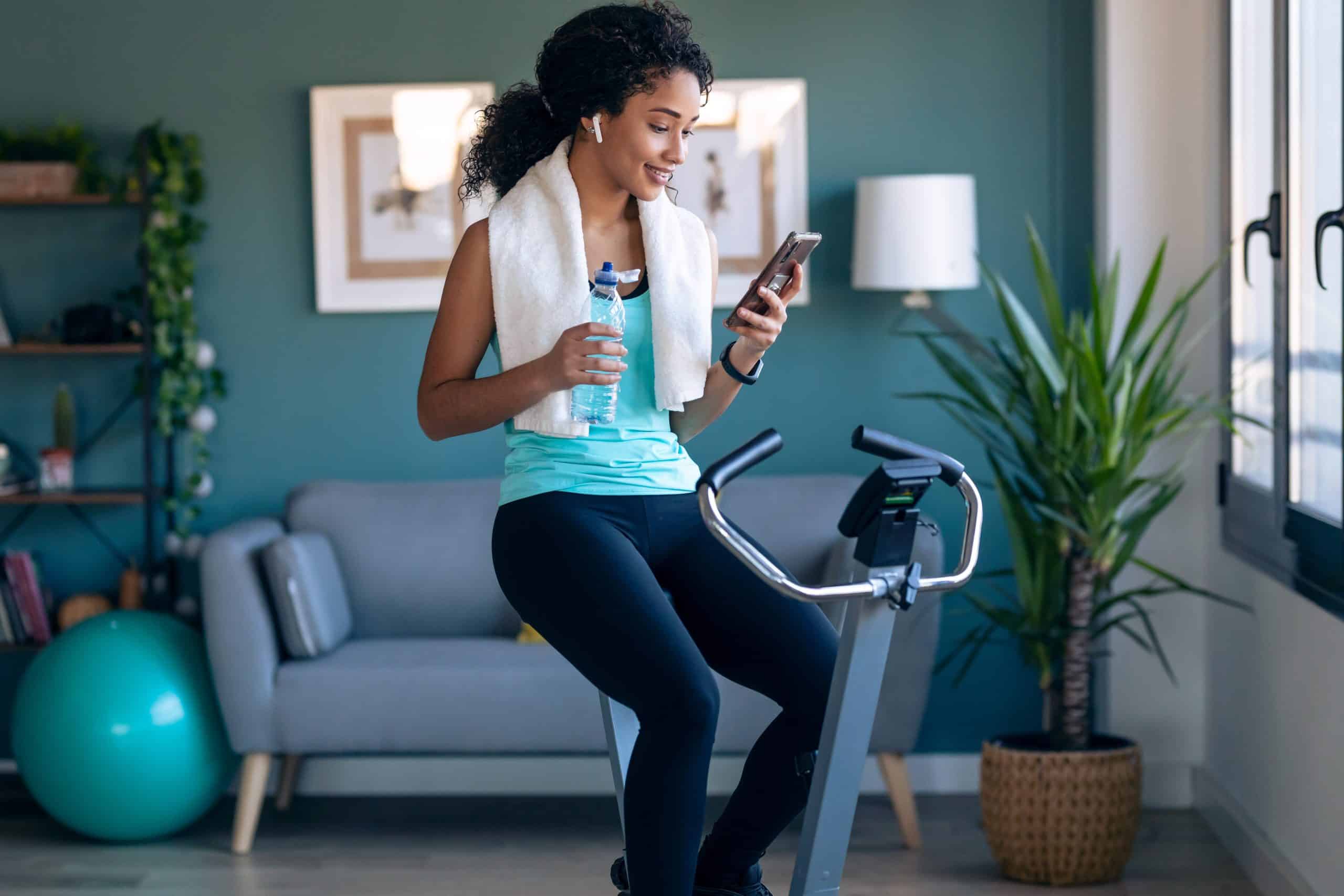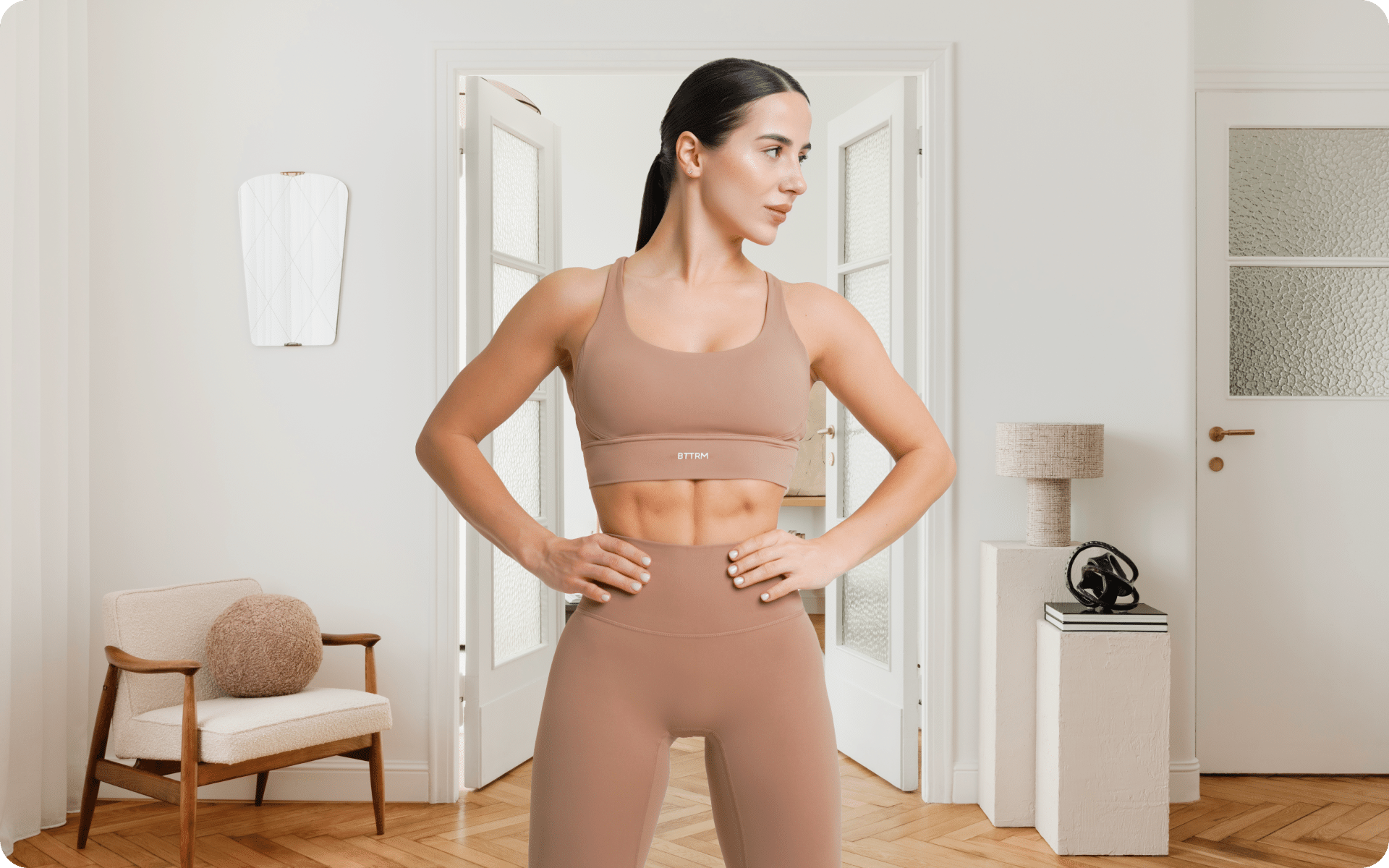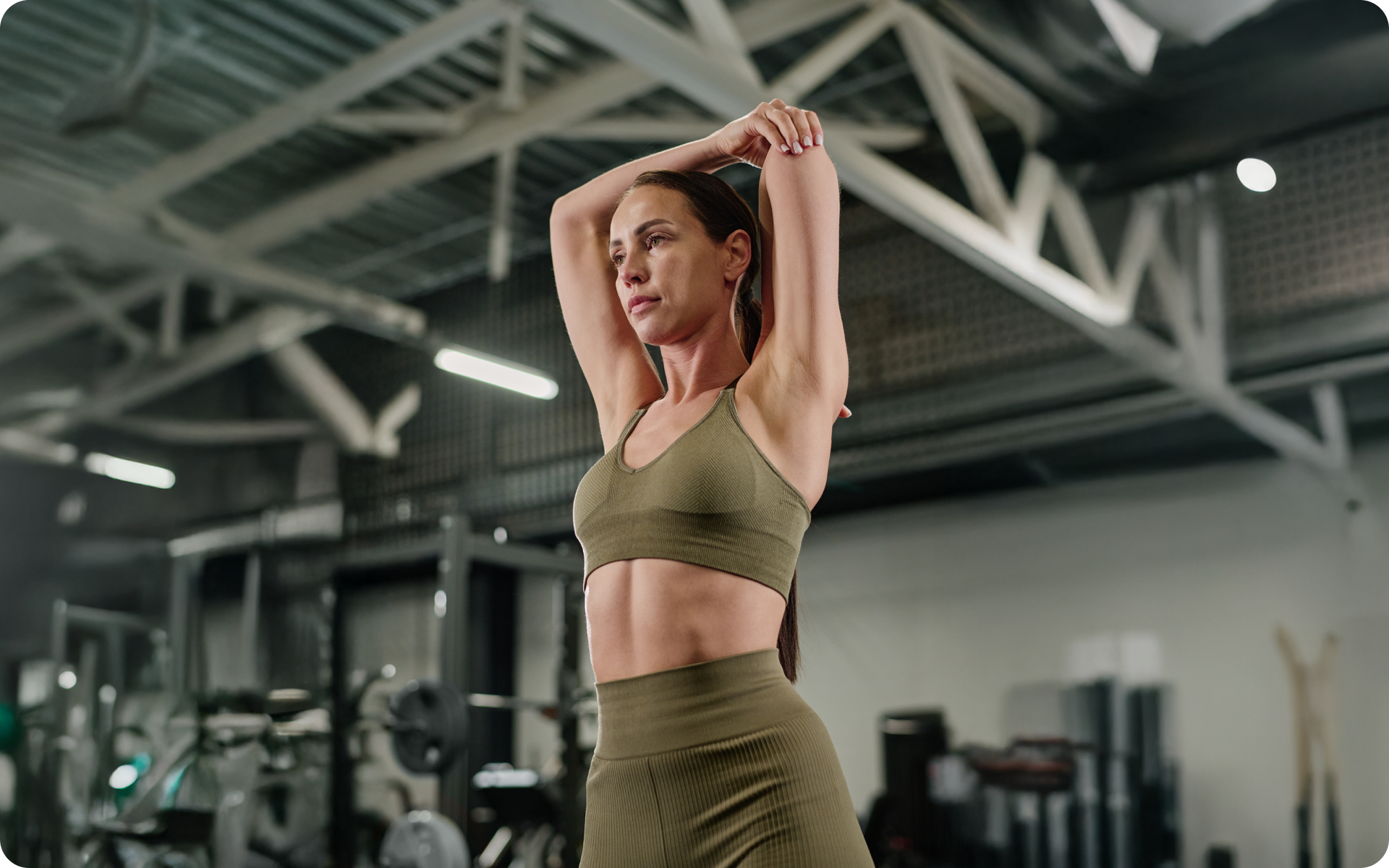Physical exercise is something that doctors recommend that all people take part in regardless of gender, age, or fitness prowess. Unfortunately, many people ignore this important piece of advice, perhaps due to the fear or lack of knowledge of what to do or where to start.
If you are among the many who are confused about where and how to start, then you are in the right place. In this article, we shall be outlining the main types of exercises that you need to know and do for a well-rounded experience. While you can simply choose to pick one or two types, it’s advisable not to limit yourself as each type benefits your body in a specific way.
Read on to find out about the different types of exercise for the body, their importance, benefits, and much more!
What Are The Different Types Of Exercises?
Truthfully, there are so many types of exercises out there that we could never list all of them. That said, many types of exercise activities can be classified into four main groups, namely (5)
- Endurance exercise aka Aerobic training
- Strength training
- Balance exercises
- Flexibility exercises
Almost all types of workout routines you can think of fall into either one or two of the above categories.
If you tend to let yourself off the hook, raise the white flag when things get tougher than you expected, send yourself on an unconscious binge-eating trip – BetterMe app is here to help you leave all of these sabotaging habits in the past!
What Are The 5 Basic Forms Of Exercise?
As mentioned above, there are four basic forms of exercise, not five. Here are some simple, easy to remember facts that you need to know about each one (10)
Aerobic aka endurance exercise
These are exercises that increase your breathing and heart rates. They basically give your heart and lungs a workout, which overtime, increases their endurance and ability to function.
Strength training
When people think of strength training, they automatically classify it as the ‘types of workouts at the gym.’ They often think of using free weights or even complicated machinery. While this is true, strength training can also be easily done at home.
Strength training, also known as weight training, is basically the exercises that we do to help build strength and muscle mass. They can make muscles both bigger and stronger. While bigger and stronger muscles look appealing, they also help make day-to-day living easier.
As we age, we can lose muscle mass over time – leading to everyday physical tasks becoming more difficult.. Remember that we use our muscles for simple things like walking, carrying groceries, sitting down, lifting heavy objects, etc. Strength training can help ensure that your muscles are in tip-top shape even as you progress in age.
Balance Exercises
As the name suggests, these types of exercise help with balance. Oftentimes, these types of exercise activities are geared towards adults as they can help prevent falls – a common issue with seniors. Aside from seniors, balance exercises are also important for stroke patients as well as obese individuals (1).
Flexibility Exercises
Also known as stretching exercises, regularly performing these types of exercises can help improve your flexibility and range of motion. Age and a sedentary lifestyle can cause our muscles to shorten. This not only limits their functionality but can also increase the risk of muscle strain pain, cramps, and even a loss of balance.
Muscles and joints that don’t function or move as well as they do can also pose a huge injury risk in the gym. Doing flexibility exercises helps ensure that your muscles are long and flexible and your joints lubricated and healthy – reducing the risk of injury.
Stretching exercises can be done at any time, but are highly recommended to perform dynamic stretching before and static stretching after a workout session.
Read more: 10 Wall Pilates Arms Exercises, and Everything Else You Need for Toned Arms
What Is The Basic Type of Exercise?
There is no one basic exercise. A proper routine incorporates all the above-mentioned types of exercises.
Why Is Exercise Important?
The Centers for Disease Control and Prevention recommends that everyone adds physical activity to their weekly routine as it can (2)
- Improves brain health
- Helps with weight loss and management
- Improves immunity and reduces the risk of chronic illnesses like heart disease, type 2 diabetes, and some cancers
- Strengthens bones and muscles
- Improves your ability to do everyday activities
How Much Exercise Per Day?
Now that you are more familiar with the different types of exercise training, how much physical activity should you do per day to achieve the benefits?
For adults aged anywhere between 18 to 64 years old, the World Health Organisation advises on doing at least 150 to 300 minutes of moderate-intensity aerobic physical activity a week. This could also translate to 75 to 150 minutes of vigorous-intensity aerobic physical activity a week.
This simply means that you should dedicate at least 30 to 60 minutes of your day to some moderately intense aerobic exercises – or 15 to 30 minutes of vigorous-intensity aerobics. Aside from aerobic exercise, adults can also benefit from incorporating strength training into their weekly routine.
This should be done at least twice a week.
For older adults aged 65 years and above, the organization suggests that they should pay more attention to balance exercises as well as strength training. These types of exercise activities should be done at moderate or greater intensity at least 3 times a week.
As for children and teenagers (ages 5 to 17), the WHO suggests at least 60 minutes of moderate-to-vigorous intensity, mostly aerobic exercise. They should also do strength training workouts at the same intensity at least thrice a week (9).
It should be noted that 30 minutes for adults (or 60 minutes for children and teenagers) is just the minimal requirement. Most people work out up to 90 minutes a day. The goal is to push yourself but not too much. Find a balance between putting in minimal effort and overdoing it.
What Is The Best Time To Work Out?
This is a question many people looking to get into fitness find themselves asking. Some people believe that working out in the morning, as early as 7 am or even 5 am, is best, while others claim that exercising in the afternoons, early evenings, or even at night is best.
At the end of the day, each time slot has its benefits and drawbacks. For example
Early morning workouts
Some studies have shown that working out early in the morning can reduce neurological food motivation, which may influence some individuals’ overall food intake (8). This is a great thing for anyone who is working out with weight loss as a main goal.
Choosing to work out earlier in the day could also help you wake up earlier – for those who want to do so. The earlier you start your day, the more things you are able to accomplish before lunchtime.
Another plus to morning workouts is that they can help support an improved sleep schedule. A study published in 2019 stated that early morning workouts can have the benefit of helping you feel tired earlier in the evening, which can help you sleep earlier and get more rest (6).
Afternoon, evening, or late-night workouts
This time slot also has just as many benefits as a morning workout. For one, it can help with alertness. For many people, once they have had their lunch, they tend to feel lethargic, and the work afternoon seems to drag on and on.
Choosing to work out during lunch could help beat this feeling and keep you productive during that last leg of the workday. It should also be noted that not everyone is a morning person. Choosing to skip the early morning workout lets you sleep in, which could prevent you from nodding off at work.
Working out later in the day could also be better for your muscles. A study published in 2010 found that as your body temperature rises during the day, it helps optimize muscle strength and function as well as endurance for performance (3). This means that when you workout later in the day, your body may feel better primed for the workload ahead.
Another study published in 2018 found that we tend to burn about 10 percent more calories in the afternoon – which could suggest that if you choose to workout later in the day, you should also burn more calories than when exercising in the morning (7).
Better sleep is also another perk of exercising in the afternoon or early evening. While exercise does help you stay awake, it can also help you fall asleep. One study done on middle-aged men found that not only can doing high-intensity interval exercise in the early evening help with better sleep, but it may also help with appetite control.
BetterMe app is a foolproof way to go from zero to a weight loss hero in a safe and sustainable way! What are you waiting for? Start transforming your body now!
Researchers noticed that when the men worked out in the evenings, they recorded reduced levels of the hunger-stimulating hormone ghrelin (4). Remember that weight loss and gain are largely dependent, not on exercise, but on the amount of calories you consume. When you are feeling less hungry, you consume less calories, which eventually leads to weight loss.
So, what is the best time to work out?
Truthfully, it all depends on the individual and their schedule. Just because morning workouts work for one person doesn’t mean that they are sustainable for another. Just because your friend loves working out at 11 pm doesn’t mean that your preference to work out at 4 pm is wrong.
When all is said and done, as long as you work out consistently, you will reap the benefits. Find a time slot that works best with your schedule and go with that.
A List Of 20 Different Types Of Exercise
If you would like to try working out but do not want to go to a gym, here are 5 different types of exercises under each category that you can do at home
Aerobic workouts – As previously stated, these can be done at a light, moderate, or vigorous intensity. Simple examples include
- Walking, jogging, or running
- Dancing – freestyle, ballroom, zumba, etc.
- Jumping rope or hiking
- Gardening
- Cycling or skateboarding
Strength training – These can be done with just your body weight, improvised DIY weight, or free weights if you have a home gym
- Squats
- Pushups and Pullups
- Planks and mountain climbers
- Lunges
- Bicep Curls
Balance Exercises – Yoga, Tai Chi, walking in a straight line (aka tightrope walk), standing on one foot, standing up and sitting down from a chair without using your hands, etc.
Flexibility exercises – Toe touches, yoga, standing calf stretch, shoulder, and hamstring stretch, as well as lunges.
15 Types Of Exercise to Do at Home
- Indoor walking
- Treadmill running
- Wall Pilates
- Calisthenics
- Yoga and chair yoga
- Dancing
- Jumping rope
- Static and dynamic stretches
- Tai Chi
- High-intensity interval training (HIIT)
- Weight training
- Resistance training
- Posture workouts
- Somatic workouts
- Desk exercises
These types of exercise at home will help keep you fit and healthy.
Read more: 15 Facial Exercises for a Radiant, Youthful, Defined, and Slimmer Face
FAQs
The Bottom Line
When it comes to working out, incorporating these types of exercises into your routine ensures that you have a well-rounded session that works all major parts and muscles of your body.
Aside from meeting your weight and body goals, you will also experience better immunity and will be able to lead a happier, healthier life.
DISCLAIMER:
This article is intended for general informational purposes only and does not serve to address individual circumstances. It is not a substitute for professional advice or help and should not be relied on for making any kind of decision-making. Any action taken as a direct or indirect result of the information in this article is entirely at your own risk and is your sole responsibility.
BetterMe, its content staff, and its medical advisors accept no responsibility for inaccuracies, errors, misstatements, inconsistencies, or omissions and specifically disclaim any liability, loss or risk, personal, professional or otherwise, which may be incurred as a consequence, directly or indirectly, of the use and/or application of any content.
You should always seek the advice of your physician or other qualified health provider with any questions you may have regarding a medical condition or your specific situation. Never disregard professional medical advice or delay seeking it because of BetterMe content. If you suspect or think you may have a medical emergency, call your doctor.
SOURCES:
- Balance Exercise (2018, heart.org)
- Benefits of Physical Activity (2022, cdc.gov)
- Different effects of heat exposure upon exercise performance in the morning and afternoon (2010, onlinelibrary.wiley.com)
- Evening high-intensity interval exercise does not disrupt sleep or alter energy intake despite changes in acylated ghrelin in middle-aged men (2019, pubmed.ncbi.nlm.nih.gov)
- Four Types of Exercise Can Improve Your Health and Physical Ability (2021, nia.nih.gov)
- Human circadian phase-response curves for exercise (2019, pubmed.ncbi.nlm.nih.gov)
- Human Resting Energy Expenditure Varies with Circadian Phase (2018, cell.com)
- Neural response to pictures of food after exercise in normal-weight and obese women (2012, pubmed.ncbi.nlm.nih.gov)
- Physical activity (2022, who.int)
- The 4 most important types of exercise (2022, health.harvard.edu)











